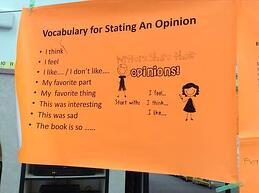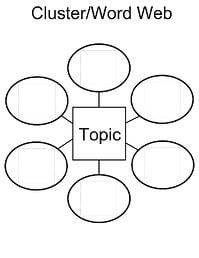By: Margo Ensz on February 19th, 2015
Helping ELL Students Retain Content with Classroom Visuals
Featured Topics: Differentiated Instruction | Featured Topics: Professional Development
One of the cornerstones of teaching ELL students is vocabulary. Vocabulary is not only vital to reading,writing, speaking, and listening, but also to understanding broader concepts and making connections between subjects.
The introduction of these new words and phrases are usually well received by students, but difficulties can arise in terms of retention. We recently attended the national Title I conference in Salt Lake City, and noticed that a number of sessios focused on engaging students, and specifically sessions on engaging ELL students to help them retain content. Joanne Billingsly, in her presentation "Making Content Sticky," outlined ways to build academic vocabulary and increase retention among ELL students: "The availability of color illustrations and teaching diagrams that support student understanding and retention of new words."

Additionally, in the Busy Teacher online article "7 Infallabile Tricks to Help ESL Students Remember New Vocabulary," two of the seven teaching strategies point to classroom visuals:
Use pictures and visuals whenever you can
"When we speak, words are gone with the wind – they disappear in a matter of seconds. Students may understand them, but their minds are quickly filled with other thoughts. Our brains, however, are wired to process visual information differently – it sticks, whether we are visual learners or not."
Flashcards, pictures, and posters can help introduce and reinfornce vocabulary words as well as test memory.
Use word clusters or webs
"Organize words into word clusters, and it’ll help students create associations between words. For each set of new words, create the first cluster together, then for future clusters have students recreate them on their own."
Beyond vocabulary
These strategies are not limited to vocabulary--visualization tools like graphic organizers, charts, and figures are vital for ELL students in the math and science classrooms as well. "Scatter and line graphs, column and bar charts, pie and area graphs, and high-low, combination and log plots can communicate concepts with minimal use of spoken or written language. The layout of such visual aids should be clear and uncluttered (source)." Plus, in terms of hands-on projects and experiments, posters that give visual reference to glassware and other safety materials should be present.
How do you use visuals to support ELL students? We'd love to hear from you--leave a comment!
 Here are a few examples of schools use visuals to support their ELL students:
Here are a few examples of schools use visuals to support their ELL students:
- Reaching Goals & Implementing Strategies in ELL Classrooms
- "It's Working:" Case Study of New Millennium Academy

